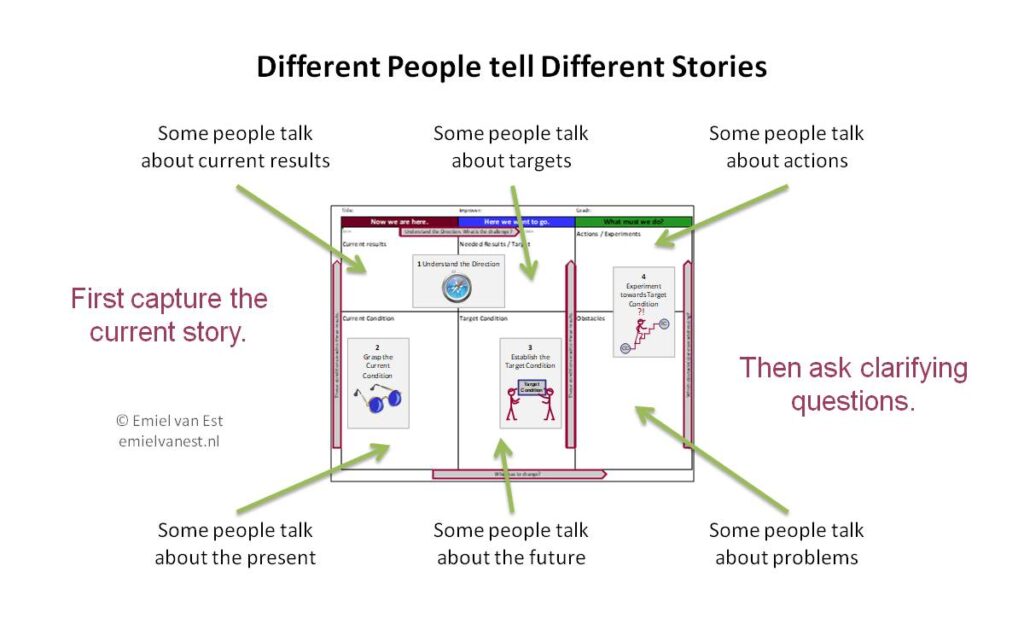Seek first to understand, then to be understood.
One of the Seven Habits of Highly Effective People as noted by Stephen Covey
In my previous post I started sharing my Toyota Kata teaching approach. I announced that my next step would be to clarify how to check your storyboard for consistency but I feel it is important to address this topic first:

I always start by listening to the current story. That is quite different from many other approaches where the mentee has to fit a story into a predetermined format that they do not yet understand.
Just think about the way most people learn how to fill in an A3. Many teach this by starting to fill out the upper left corner and try to finish in the lower right corner. A few years back I taught this approach as an associate teacher to some students of Hogeschool Arnhem Nijmegen and I saw how they struggled. Unnecessarily.
Meet people where they are
So, what I do is, I take a copy of my storyboard and I just ask people to tell the story of their subject of interest. I just listen and start making notes on my storyboard.
- Do I hear something about current results?
I have a place to note that. - Do I hear something about actions?
I have a place to note that. - Do I hear something about the current reality?
I have a place to note that. - Do I hear something about problems?
I have a place to note that. - Do I hear something about the future?
I have a place to note that. - Do I hear something about targets?
I have a place to note that.
I have been using this practice for years and I noticed that…different people tell different stories. Some people talk primarily about problems. Quite often you will find that people talk primarily about targets and actions. Some people are great in expressing a future. Et cetera.
But nobody ticks all the boxes!
Customize your questions
Now I have the current story captured in my notes on one sheet of paper. I can show that piece of paper and tell the person I was listening to that I still have some open boxes and therefore I would like to ask some questions.
Now I have the current story in the logic of my storyboard. That helps me craft highly customized questions based on the story I just heard. For example I might ask:
“You told me you want to reach target X. Could you tell me something about the current results you get regarding X?”
or:
You told me you want to take action Y. Can you explain to me why you think it is important to take that action?
This kind of questions help me to complete the storyboard and to check the story for consistency. So checking a storyboard for consistency is very much about learning how to ask these highly customized kind of questions.
Asking these questions is a great way to teach someone the thinking pattern of the improvement kata. One question at a time.
It needs some practice and I have some fun exercise for that so stay tuned.
PS
This is also a great way to take notes during a meeting. You will always be one step ahead in asking the next question!